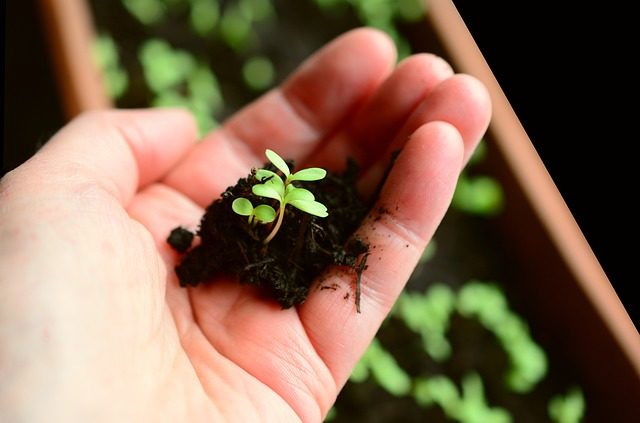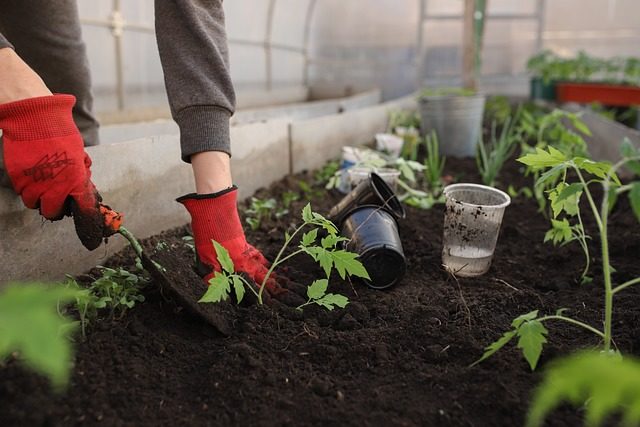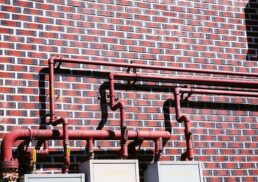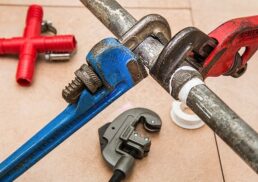Have you ever wondered what those mysterious white specks in your potting soil are? They’re not just for show – they’re actually a secret weapon for unlocking the full potential of your plants. Introducing perlite, a naturally occurring mineral that can work wonders for your plant’s growth and health. Let’s dive into the world of perlite and discover how this volcanic glass can revolutionize your gardening experience!
In this blog post, we’ll explore the origins and properties of perlite, its various horticultural applications, how to choose the right grade for your needs, address common concerns, and even look at some alternatives. So, let’s get started on our journey to unlock the power of perlite for better plant growth!
Table of Contents
Key Takeaways
Perlite is a naturally occurring mineral with unique properties that make it an ideal soil additive for gardening, horticulture and potted plants.
It helps to improve drainage and aeration while preventing root rot and encouraging healthy plant growth.
Safe handling of perlite should be practiced alongside incorporating alternative additives such as pumice or rice hulls into your routine to maximize the benefits of this material in your garden.
Understanding Perlite: Origins and Properties

Perlite is a naturally occurring mineral that is often used to enhance soil structure, drainage, and aeration in various horticultural applications. It is an amorphous volcanic glass that is formed when natural perlite is heated to temperatures of approximately 1600 degrees Fahrenheit. This process causes the water within the perlite to react, similar to popcorn when heated, expanding up to 40 times its original size. The resulting expanded material, moistened perlite, is an incredibly lightweight material, with many tiny cells that can absorb moisture and improve drainage.
The unique properties of perlite make it an ideal soil additive utilized in gardening. It offers excellent moisture retention, aeration, and natural sterility, making it a popular component in potting soils. One key aspect of perlite is its ability to prevent root rot and fungal diseases by improving water drainage in the soil.
While perlite isn’t a fertilizer, and doesn’t add any nutrients or microbial benefits to your plants or soil, it does have the capacity to retain nutrients temporarily. This trait helps in preventing nutrients from washing away quickly, giving your plants the needed sustenance.
Horticultural Applications of Perlite
Perlite is a versatile soil additive that can be used in various gardening applications to enhance soil structure, prevent root rot, and support plant health. It is particularly effective in maintaining soil structure loose and well-drained, thus avoiding the risk of compaction over time. So, whether you’re a seasoned gardener or just starting out, incorporating perlite into your gardening routine can provide a range of benefits that promote healthy plant growth.
The upcoming subsections will outline specific uses of perlite, highlighting its role in enhancing soil structure, warding off root rot, and bolstering plant health in tropical and hydroponic gardens.
Improving Soil Structure with Perlite
One of the key benefits of adding perlite to soil is its ability to improve soil structure by facilitating greater water retention and nutrient delivery to plant roots. This lightweight, porous material is especially effective in improving drainage in clay soils, allowing for better water retention and nutrient delivery to plant roots.
Perlite is an ideal material for maintaining the consistency of planting beds over several years, as it does not degrade over time. This means that a single application can maintain a light and loose planting bed for several years, ensuring optimal growing conditions for your plants.
Learn more, visit How to Use Perlite to Improve Soil Structure.
Preventing Root Rot and Encouraging Healthy Roots
Root rot is a common problem in gardening, often caused by waterlogged soil. Fortunately, perlite can help prevent root rot by improving soil drainage, thus reducing the risk of waterlogging. Additionally, perlite facilitates aeration of the soil, which is essential for healthy root development.
Perlite enhances soil porosity and improves water drainage, fostering an environment conducive to healthy root growth and simultaneously minimizing the threat of root rot. This ensures that your plants will have a strong, healthy foundation, setting them up for success.
Supporting Plant Health in Tropical and Hydroponic Gardens
Perlite is particularly beneficial for tropical plants and hydroponic gardens, providing optimal growing conditions by improving drainage, increasing aeration, stimulating root growth, and offering a more stable growing medium. The lightweight, porous material enhances water and air circulation, which is essential for the healthy growth of tropical plants and the success of hydroponic systems.
In addition to promoting healthy root development, perlite can help improve drainage and aeration, leading to increased crop yields. By contributing to the physical stability of the growing medium, perlite ensures that your tropical plants or hydroponic garden will thrive under ideal conditions.
Choosing the Right Grade of Perlite for Your Needs

Like any other gardening product, selecting the appropriate grade of perlite to suit your unique needs is crucial. Perlite is available in four grades:
Super coarse
Coarse
Medium
Fine
Each grade has its own unique characteristics and applications, so understanding the differences can help you make an informed decision.
Super coarse and coarse grades are suitable for amending raised beds and garden beds, or dense soils with high water-holding capacity. Medium-grade perlite is often used in commercial potting soil, while fine perlite is ideal for starting seeds or rooting cuttings. By choosing the right grade of perlite for your gardening needs, you can ensure optimal results and healthy plant growth.
The upcoming subsections will delve into the specific uses and advantages of coarse, medium, and fine perlite in greater detail.
Coarse Perlite for Raised Beds and Container Gardening
Coarse perlite is ideal for raised beds and container gardening, as it provides excellent drainage and aeration. By incorporating coarse perlite into your raised beds or container gardens, you can improve soil structure and promote healthy plant growth.
In addition to its benefits for drainage and aeration, coarse perlite also helps retain moisture in the soil, which is critical for healthy root growth. This ensures that your plants have access to the necessary water without becoming waterlogged, setting the stage for a thriving garden.
Medium Perlite for Commercial Potting Soil Mixes
Medium perlite is commonly used in commercial potting soil mixes, offering a balance of moisture retention and drainage. By incorporating medium perlite into your potting mix, you can improve soil structure, prevent root rot, and promote healthy root growth.
Medium perlite contributes to a well-balanced growing medium that ensures plants have access to essential water and nutrients without becoming waterlogged. This makes it an excellent choice for use in commercial potting soil mixes, as well as for gardeners looking to create their own soil mix at home.
Fine Perlite for Seed Starting and Cuttings Propagation
Fine perlite is perfect for seed starting and cuttings propagation, as it ensures proper moisture levels and root development. By mixing fine perlite with other soil components, such as compost or peat moss, you can create a well-draining medium that promotes successful germination and growth.
One common concern associated with using fine perlite for seed starting and cuttings propagation is the potential for fluoride burn. However, this concern is largely unfounded, as fluoride burn is unlikely to occur in commercial potting soils. Fine perlite can be safely used for seed starting and cuttings propagation, ensuring healthy plant growth from the very beginning.
Addressing Common Concerns About Perlite
Despite its value in gardening, it’s necessary to clarify some common misconceptions and concerns related to this multifaceted soil additive. One such concern is the myth of fluoride burn, which we’ve already debunked in the previous section. Rest assured, fluoride burn is unlikely to occur in commercial potting soils, and concerns about it are largely unfounded.
Another important aspect to consider when using perlite is safe handling and use. Perlite is not known to be harmful to humans when handled normally. However, if inhaled for an extended period, it may cause irritation to the airways. To ensure safe handling and use of perlite, it’s recommended to wear protective gear for the eyes and mouth to reduce the risk of inhalation of perlite dust.
Debunking the Fluoride Burn Myth
As previously highlighted, the myth of fluoride burn often arises when using fine perlite for initiating seeds and propagating cuttings. However, this concern is largely unfounded, as fluoride burn is unlikely to occur in commercial potting soils. The risk of fluoride burn from perlite is minimal, and it should not deter you from using this beneficial soil additive in your garden.
To further alleviate concerns about fluoride burn, it’s worth noting that perlite does contain fluoride, but at levels that are not likely to cause harm to humans or animals. So, go ahead and confidently incorporate perlite into your gardening routine, knowing that it’s a safe and valuable addition to your plant’s growth and health.
Ensuring Safe Handling and Use of Perlite
Although perlite is safe to use, one should exercise caution while handling and working with it. Wearing a dust mask and gloves when handling perlite can help prevent inhalation and skin irritation.
Additionally, it’s advised to wear goggles to protect your eyes from dust and long-sleeved shirts and pants to safeguard your skin when working with perlite. By following these safety measures, you can ensure that you’re using perlite safely and effectively in your garden.
Alternatives to Perlite: Pumice, Rice Hulls, and More
Even though perlite is a favored soil additive for improving soil structure, drainage, and aeration, there are other viable alternatives. Some alternatives to perlite include:
Pumice
Rice hulls
Vermiculite
Coconut coir
Sand
These materials, perlite and vermiculite, provide similar benefits and can be used as substitutes for horticultural perlite in gardening, horticulture, and caring for potted plants.
Pumice is a lightweight, porous volcanic rock that can be used as a direct replacement for perlite. Other alternatives to perlite include:
Rice hulls, a byproduct of rice milling, can also be used as a soil amendment to improve aeration and drainage.
Horticultural grit
Vermiculite
Calcined clay
Bark
Peat
By exploring these alternatives, you can find the perfect soil additive to suit your specific gardening needs and preferences, ensuring that your plants receive the best possible care and support in their garden soil.
Tips for Incorporating Perlite into Your Gardening Routine
Now equipped with ample knowledge about soil, it’s time to apply this understanding and integrate it into your gardening habits. Here are some tips to help you get started.
Choose the right grade of perlite for your needs, whether it’s coarse perlite for raised beds and container gardening, medium perlite for commercial potting soil mixes, or fine perlite for seed starting and cuttings propagation.
When handling perlite, be sure to wear a dust mask and gloves to prevent inhalation and skin irritation.
If you’re looking for alternatives to perlite, consider pumice, rice hulls, or other materials that can provide similar benefits in terms of soil aeration and drainage.
By following these tips, you can successfully incorporate perlite into your gardening routine and unlock the power of this volcanic glass for better plant growth.
Summary
In conclusion, perlite is a valuable soil additive that can greatly enhance plant growth and health. Its unique properties make it an ideal choice for improving soil structure, drainage, and aeration in various horticultural applications. By choosing the right grade of perlite for your needs, using proper handling techniques, and exploring alternative materials if needed, you can ensure that your plants receive the best possible care and support.
So, the next time you come across those mysterious white specks in your potting soil, remember the power of perlite and the wonders it can work for your garden. Happy gardening!
Frequently Asked Questions
What are the uses of perlite?
Perlite is a naturally occurring siliceous rock that expands up to 20 times its original volume when heated, making it ideal for speeding up germination, rooting, aeration, draining, insulation and texture improvement in potting mixes and clay soils.
What is perlite made out of?
Perlite is made from heated volcanic glass, which is heated to 1000°C until it pops like popcorn and expands many times its original size.
This lightweight, sterile material is easy to handle and has a long-lasting lifespan.
What are the disadvantages of perlite?
Perlite drains water quickly, so it is not suitable for plants that need consistently moist soil.
Additionally, it cannot be used with fish and the dust can be dangerous when inhaled.
Finally, solids loading and plant roots may cause clogging.
Is perlite good for lawns?
Perlite is great for lawns, as it helps promote root growth and can be broadcasted across the entire lawn.
Spiking or plugging your lawn beforehand will help get the amendment into the root zone quicker.
What is perlite and why is it used in gardening?
Perlite is a volcanic glass that helps improve soil structure, drainage, and aeration to make gardening easier.









